Oil
- There has been an export ban on all fuel exports from Russia since March 1, 2024. The ban is set to last for 6 months and aims to stabilize prices in the country
- Ukraine has carried out a series of attacks on Russian infrastructure related to oil, especially refineries, which may limit production prospects in the country in the near future
- According to information from Middle East journalists, bombings in Gaza are expected to continue. Houthi reports that military operations targeting ship movements through the Red Sea will be intensified during the Ramadan period
- OPEC+ decided to extend voluntary cuts of 2.2 million barrels through Q2 2024 at the beginning of March
- Total cuts by OPEC+ amount to 5.86 million barrels per day since the 2022
- IEA expects demand to increase by 1.22 million barrels per day this year, while OPEC anticipates growth at 2.25 million barrels per day
- IEA also forecasts a record supply reaching 103.8 million barrels per day, with growth being driven by the US, Brazil, and Guyana
- Crude oil inventories in the US have recently risen but remain close to a 5-year average and well below last year's levels
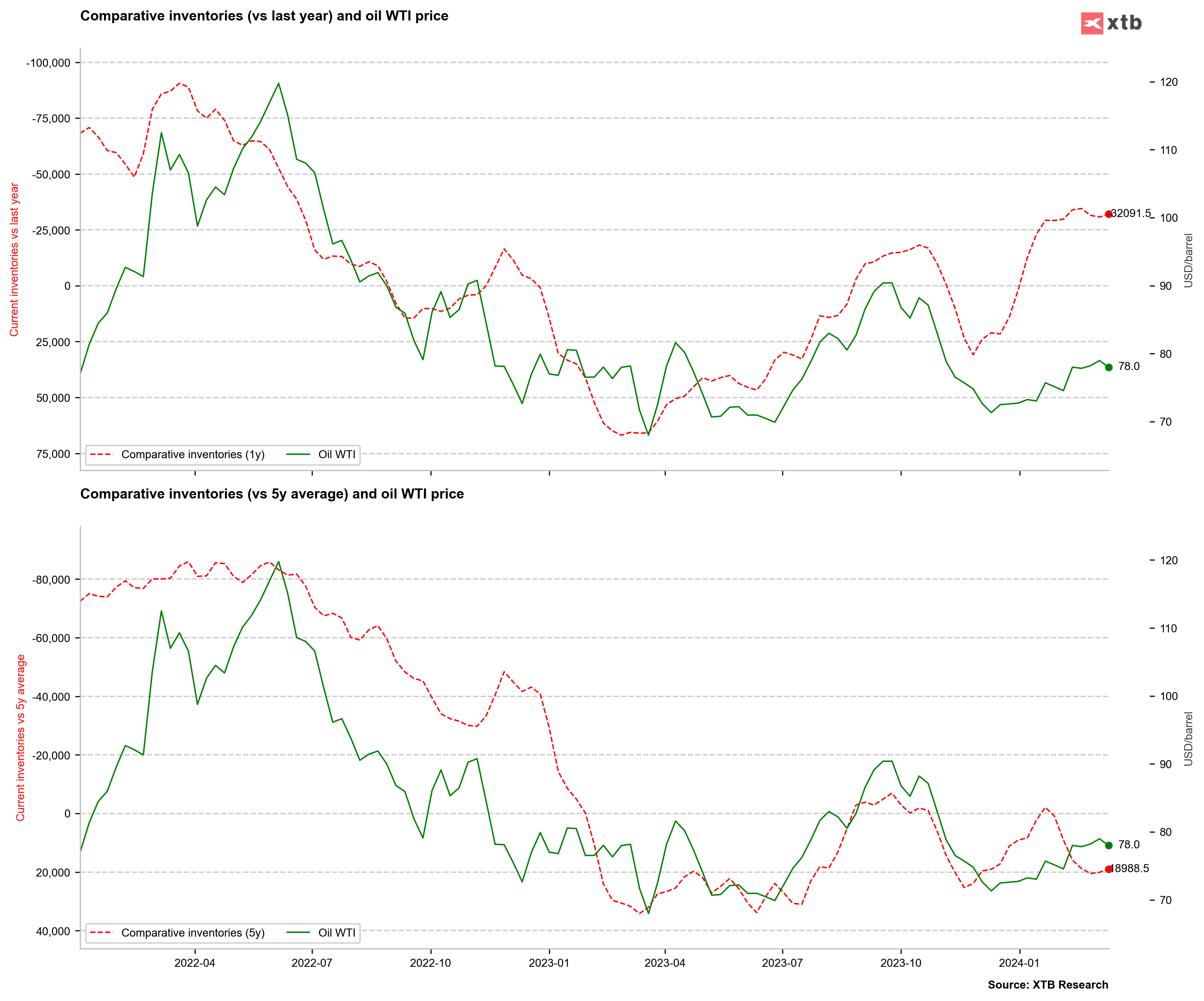
Inventories are near the 5-year average, suggesting that oil may be well-valued in the long term. However, geopolitical uncertainties persist, and OPEC+ actions artificially depress oil supply. On the other hand, without production constraints, the level of production probably wouldn't be much higher than now due to marginal production costs. Source: Bloomberg Finance LP, XTB
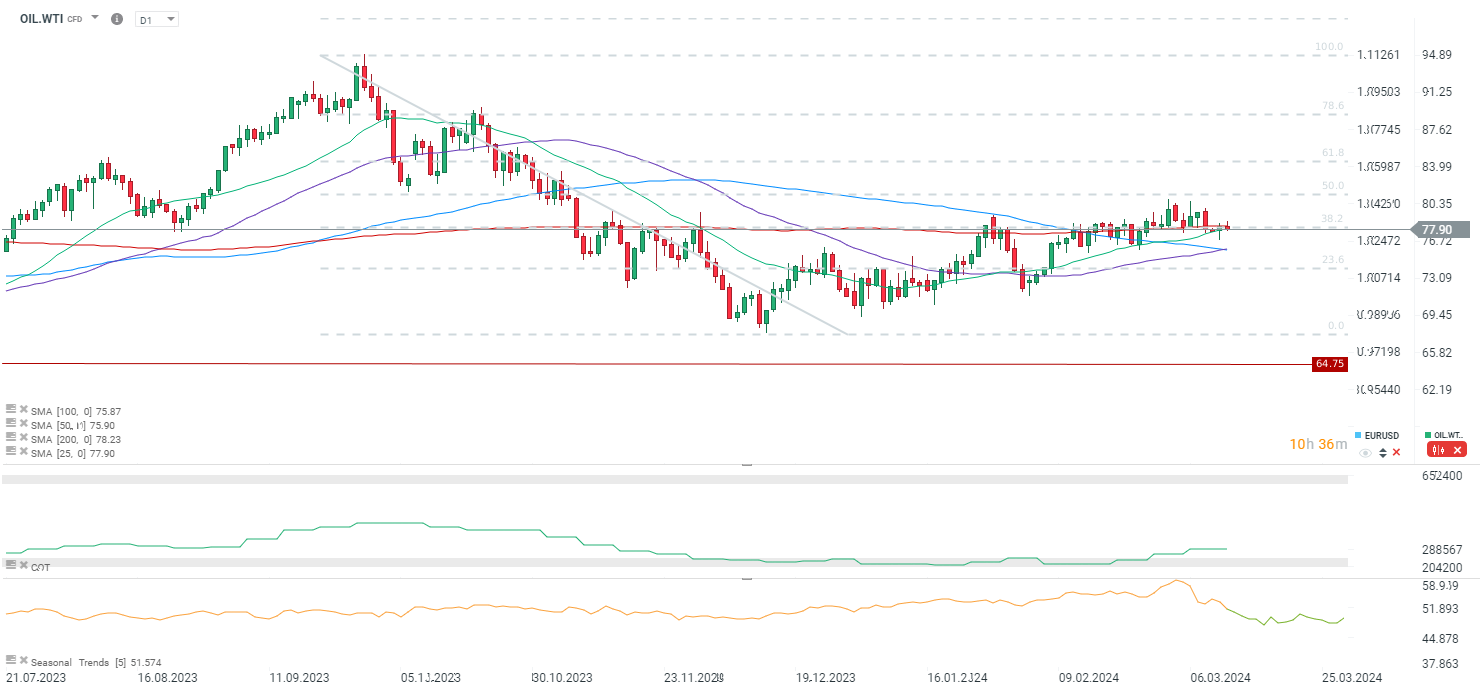
WTI recovered most of its initial losses yesterday, but currently, there is a return to declines from around the 25- and 200-day moving averages. Source: xStation5
Silver
- Most of the silver production is associated with the extraction of other industrial metals, particularly copper
- Copper production in Peru is expected to increase this year, reaching up to 3 million tons, representing approximately a 9% year-on-year growth
- Silver production, especially in terms of mining, has been weak in recent years. The potential increase in production in Peru could limit upside for silver price
- Peru is the world's second-largest silver producer, with an annual production of around 3,000 tons. Mexico holds the first position with a production of approximately 6,000 tons. The overall annual mining production is slightly above 25,000 tons
- Nevertheless, even a slight growth prospect in production should not lead to the closure of the deficit this year. Moreover, it may be one of the larger deficits in history or at least in recent years
- Considering the 10-year moving average of the gold-to-silver ratio, with a gold price at $2,200, the silver price should be above $27 per ounce
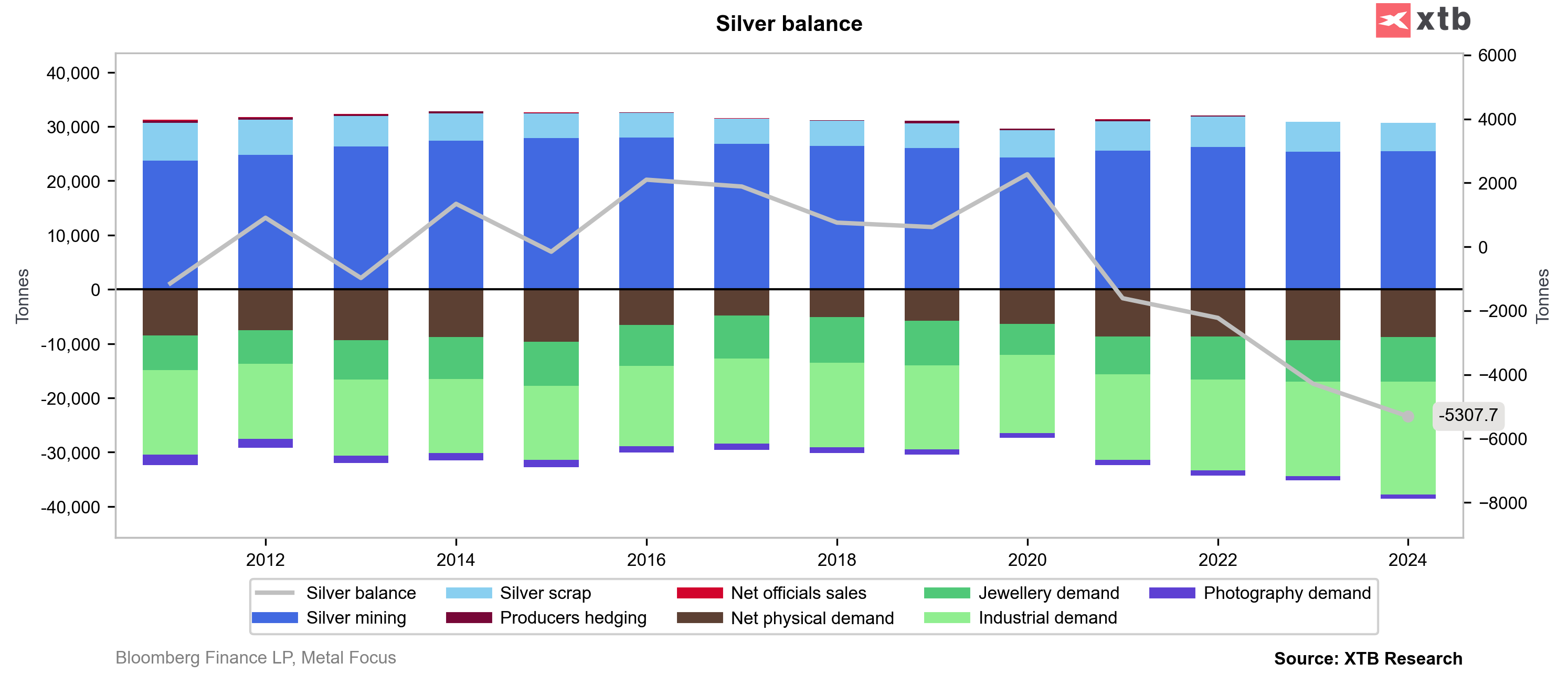
Possible prospects for a rebound in copper production may also lead to a rebound in silver production in Peru. However, this should not have a big impact on the expected deficit this year. Source: Bloomberg Finance LP, XTB
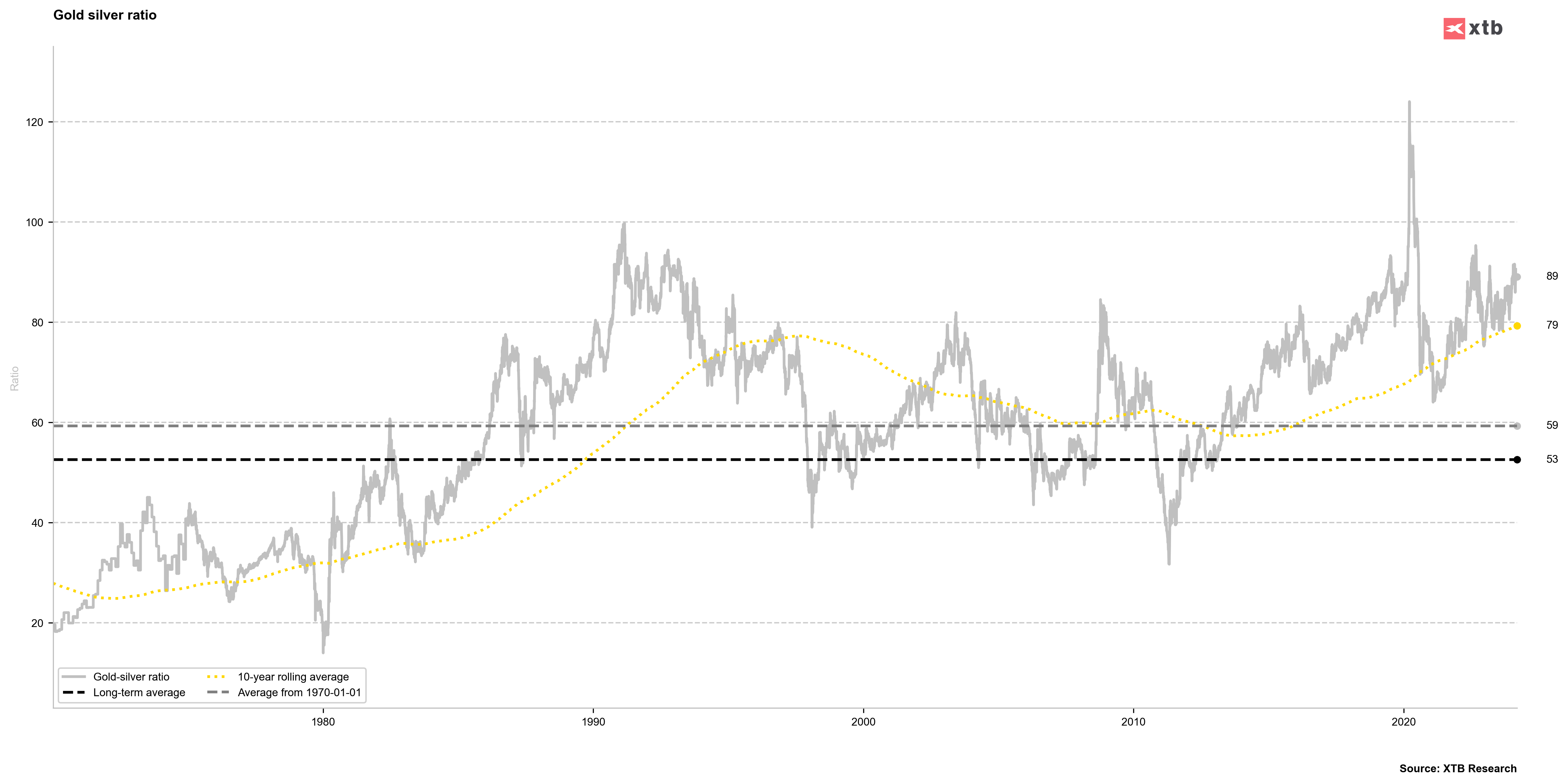
Gold-to-silver ratio: If the bull market in precious metals gains strength, reaching a level of 79 should be easily achievable. In the case of a long-term bull market, reaching levels between 50-60 points could be possible. Source: Bloomberg Finance LP, XTB
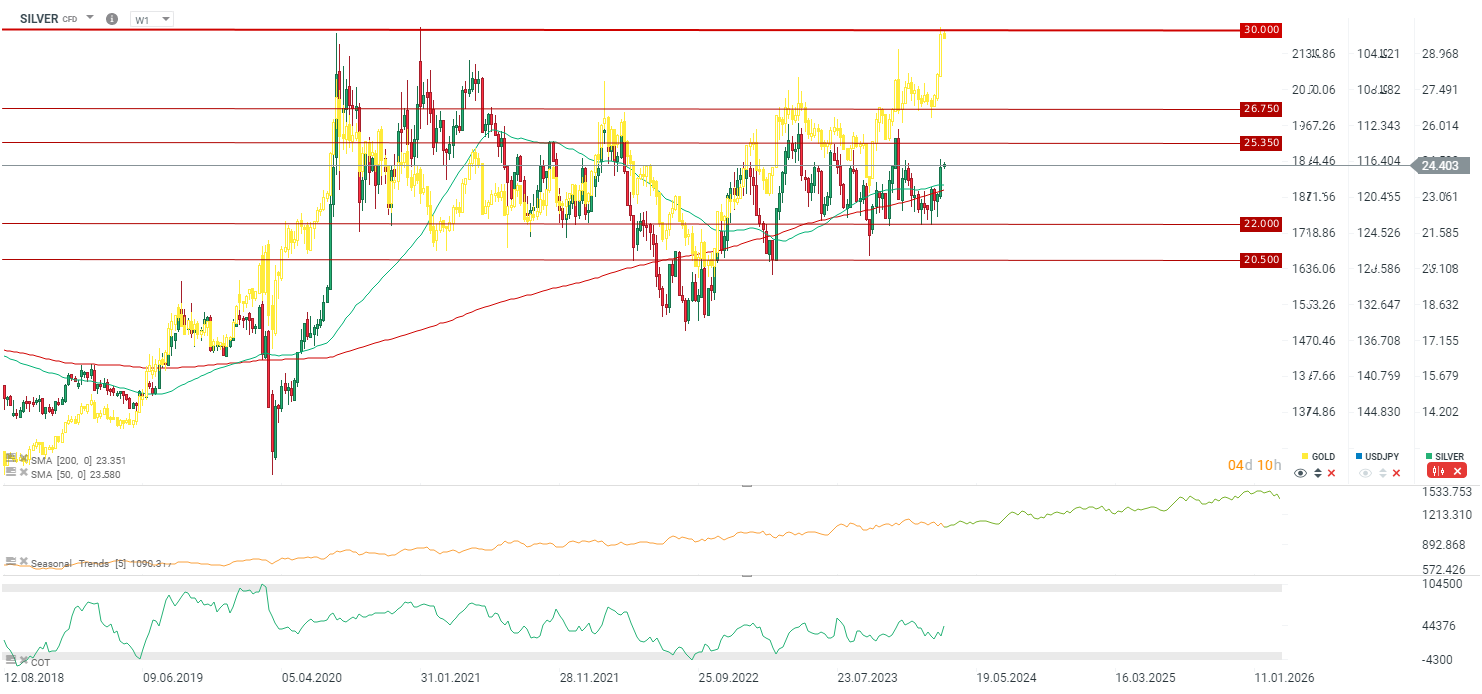
Potentially, there is still a lot of room for silver price growth in the short term. The first targets would be around $25.3-26.0 per ounce, followed by $26.7-27.0 per ounce. The key target level in the case of a continuation of the bull market in precious metals is $30 per ounce. Source: xStation5
Gold
- Gold reached levels close to $2,200 per ounce, marking another all-time high
- It's challenging to pinpoint a single specific reason for the recent price increase in the gold market. Factors contributing to this include expectations of interest rate cuts in the US, the weakness of the dollar, the ongoing process of de-dollarization, as well as demand for alternative assets such as cryptocurrencies and stocks
- One possible cause is the prospect of a total shift in the monetary policy of the Bank of Japan. Speculation suggests that the BoJ may not only abandon the yield curve control program this month but also raise interest rates.
- Theoretically, this could pose a threat to global stability if there were a massive withdrawal of funds from U.S. bonds to return to the home country (both by local and global investors)
- A change in BoJ policy and the expectation of a Fed rate cut could significantly reduce the profitability of the carry trade using the yen and the dollar
- Looking at long-term technical analysis, gold may be in another upward cycle similar to those in the 1970s/80s and 2000. In such a case, the gold price could increase by 100-200% from the current levels over the course of a growth cycle (5-10 years)
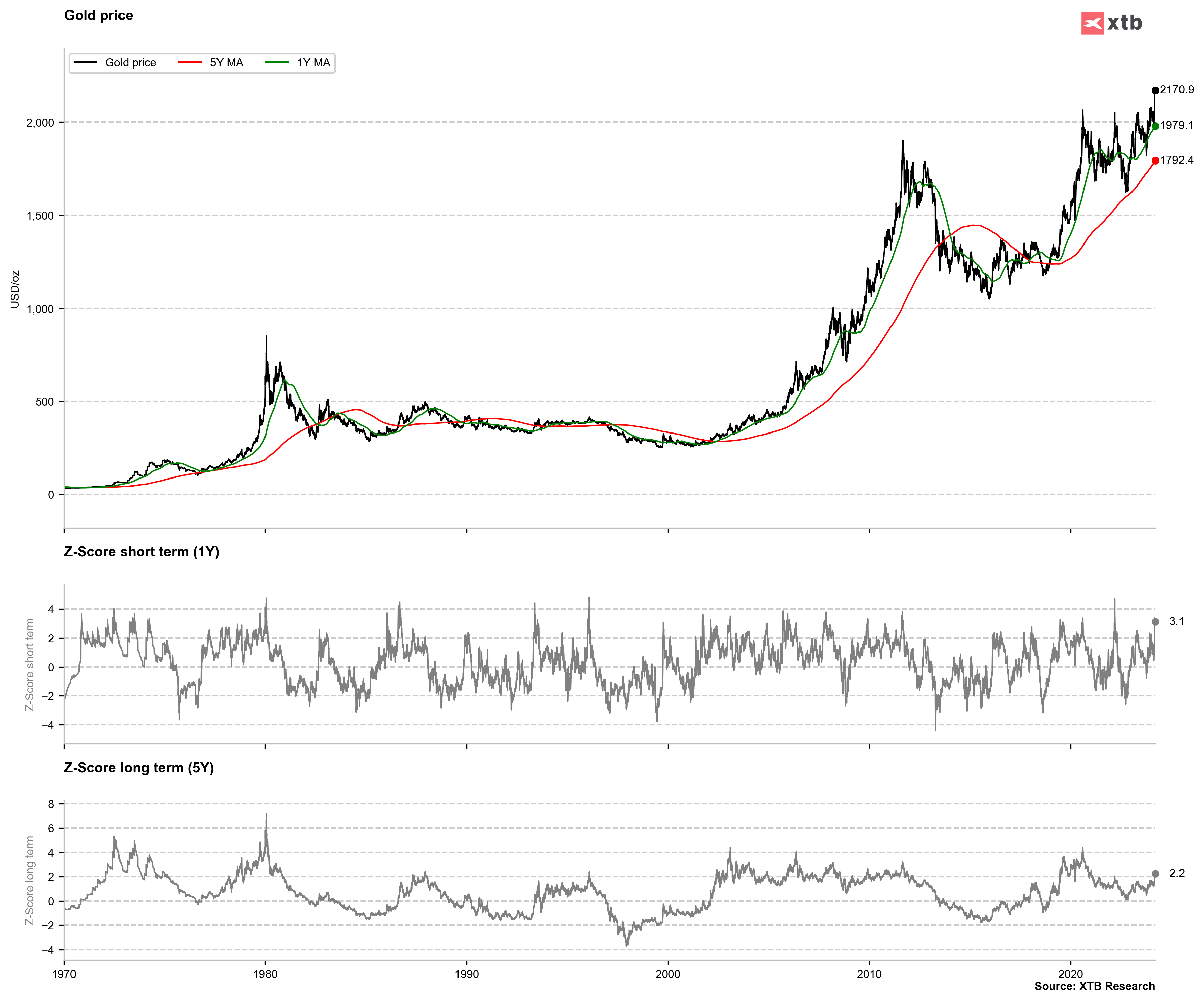
Historically, we have witnessed two significant and long-term growth cycles during which gold gained several hundred percent. If such a cycle began in 2018, we might only be one-third or halfway through this growth cycle, placing gold with growth potential even up to $4,000-$5,000 per ounce by 2028-2030. Source: Bloomberg Finance LP, XTB
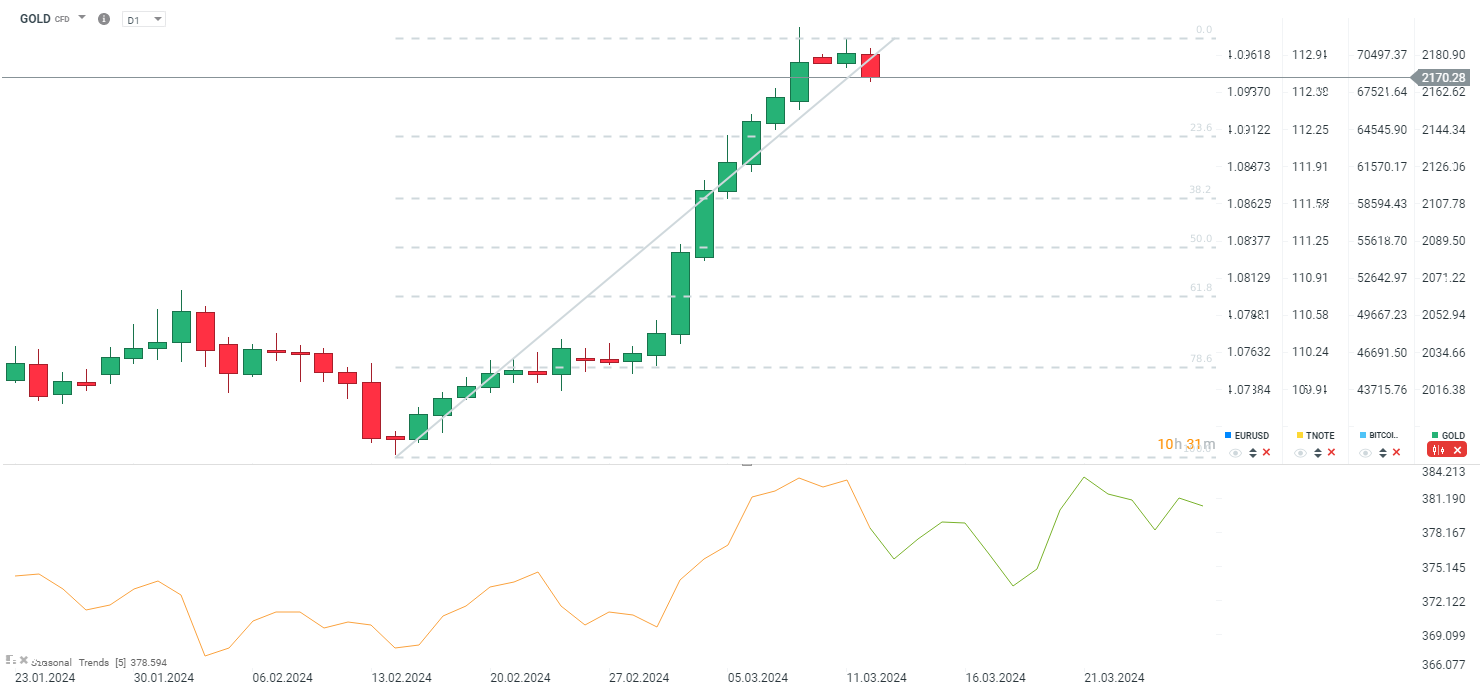
Gold has not had a down day since February 27! (Of course, March 10 is not counted as it is only the Sunday opening). Today, however, there is potential for a bearish engulfing pattern, especially since the U.S. CPI inflation for February slightly exceeded expectations. The key support zone is around $2,140-$2,150 per ounce. Source: xStation5
Wheat
- The USDA report indicates that wheat production in the 2023/2024 season is projected to be 786.7 million tons, with consumption at the level of 799 million tons. This implies a decrease in stockpiles
- El Niño may lead to a drier weather in North and South America, potentially leading to reduced prospects for key agricultural product production this year. On the other hand, El Niño may have improved production prospects in Australia. Australia faced production issues last year and was a factor that could have led to price increases
- The export season in Brazil has started very strongly. In the first week of March, 417,000 tons of wheat were exported, while in the entire previous year, 608,000 tons were exported. Exceeding this level is expected this year
- Russia, Australia, and Argentina are expected to contribute the most to the increase in production this year
- China, one of the world's largest consumers, continues to cancel deliveries from the US. Recently, China has canceled shipments totaling 504,000 tons, which may indicate a decrease in demand or that China can find cheaper wheat elsewhere
- The price in the US may remain relatively high compared to other countries, limiting export prospects
- CFTC data shows that net short positions have been maintained on wheat since October 2022

Only the May USDA report will shed more light on production prospects for the 2024/2025 season. The current situation indicates a continuation of declines, although in the second half of the year, we may observe the prospect of a rebound, although part of this rebound may come from the futures curve, which remains upward. Source: xStation5
3 markets to watch next week (24.10.2024)
Chart of the day: GOLD (24.10.2025)
NATGAS loses after the EIA inventories report
BREAKING: OIL gain extends to 3.5% 📈Chinese state companies stop Russian oil purchases
This content has been created by XTB S.A. This service is provided by XTB S.A., with its registered office in Warsaw, at Prosta 67, 00-838 Warsaw, Poland, entered in the register of entrepreneurs of the National Court Register (Krajowy Rejestr Sądowy) conducted by District Court for the Capital City of Warsaw, XII Commercial Division of the National Court Register under KRS number 0000217580, REGON number 015803782 and Tax Identification Number (NIP) 527-24-43-955, with the fully paid up share capital in the amount of PLN 5.869.181,75. XTB S.A. conducts brokerage activities on the basis of the license granted by Polish Securities and Exchange Commission on 8th November 2005 No. DDM-M-4021-57-1/2005 and is supervised by Polish Supervision Authority.


